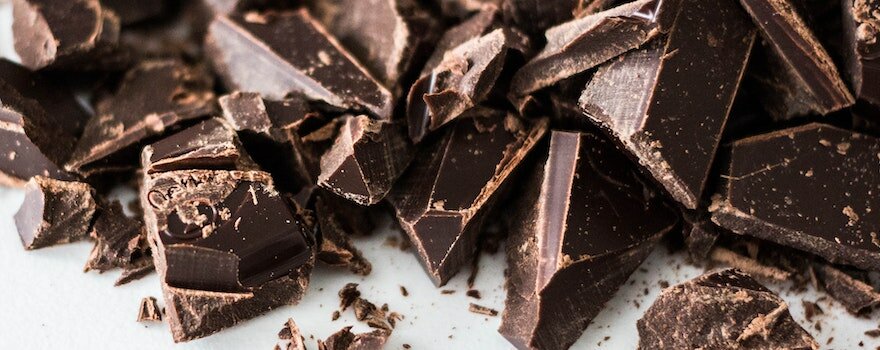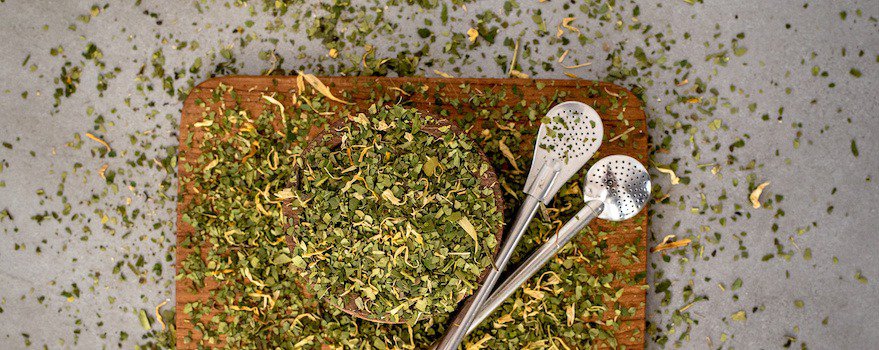What is theobromine?
The alkaloid of chocolate
Originating in the Americas, cocoa, the main ingredient of chocolate, contains a multitude of molecules with high nutritional potential. They also have numerous health benefits.
The cacao is very rich in magnesium, triglycerides, and antioxidants, but that’s not all. It contains another molecule of interest for health: theobromine.
Discovered in 1878 in the seeds of the cacao tree, theobromine is an alkaloid, an organic substance of natural origin belonging to the family of methylxanthines.
Son nom, « théobromine » vient de theobroma, nom générique du cacaoyer, composé des racines grecques theo (« dieu ») et broma (« nourriture »), signifiant « nourriture des dieux ». On lui a ajouté le suffixe « -ine », donné aux alcaloïdes.

How does theobromine affect our bodies?
The theobromine is a molecule very similar to caffeine. It also has an energizing and stimulating effect, but its action is longer and gentler.
Like caffeine, it acts by blocking adenosine receptors, a substance that inhibits arousal, causing an increase in epinephrine secretion (a “stimulating” hormone related to adrenaline).
No need to worry, chocolate can be consumed safely, within reasonable limits, and especially if it’s a high-quality chocolate with clear traceability!
En effet le dosage en théobromine est suffisamment faible dans le chocolat pour n’avoir aucun effet néfaste sur l’organisme. Des doses de plus de 1000 mg ont été utilisées en toute sécurité dans des essais cliniques sans effet nocif, mais peuvent cependant causer une légère gêne gastrique.

In which foods can it be found?
Theobromine is found in greater proportion in cocoa but not only there. It is also present in smaller amounts in coffee beans, in the leaves of maté, in the guarana, in the kola nut and also in the tea we drink.
Its concentration is quite variable:
- Cacao bean: 1100 – 4300 mg per 100 g
- Cocoa powder: 530 – 2600 mg per 100 g
- Mate leaf: 450 – 900 mg per 100 g
- Guarana: 20 – 60 mg per 100 g
- Dark chocolate: 450 – 1600 mg per 100 g

All chocolate products contain theobromine, but dark chocolate contains higher levels since it is not diluted with ingredients such as milk and cream.
Milk chocolate contains less of it due to the addition of sugar and fats. This applies to all other nutrients present in cocoa!
What are the benefits of theobromine ?
What the science says
Theobromine can have many effects on the human body, including:
- A sense of well-being: this substance may be one of the causes of chocolate’s positive effects on mood. Theobromine, in the central nervous system, may stimulate the production of endorphins, a molecule (neurotransmitter) that produces feelings of well-being.
- In medicine, it is used as a cardiac stimulant, diuretic, and vasodilator (it dilates blood vessels, leading to a drop in blood pressure).
Brain-boosting effect

By triggering the secretion of epinephrine (a stimulating hormone that allows the body to respond to stress), theobromine causes nervous activity and an increased heart rate, keeping our body alert.
In a clinical study of a wide range of oral theobromine doses (250, 500 and 1000 mg) in 80 healthy participants, theobromine showed dose-dependent differential effects.
At 250 mg, it showed positive effects on mood that became negative at higher doses. It also increased heart rate in a dose-dependent manner.
These results suggest that theobromine at normal intake levels, such as those found in a standard 40 g bar of dark chocolate, may contribute to the positive effects of chocolate on our mood.

Cardiovascular protection and effect on cholesterol
Several clinical trials suggest a beneficial effect on the cardiovascular system. A scientific study on the consumption of 850 mg/day of theobromine for 4 weeks suggests an increase in HDL cholesterol (the “good cholesterol”), reducing the risk of cardiovascular diseases.
A meta-analysis appears to show a correlation between higher consumption of dark chocolate and a decrease in cardiovascular diseases.
Effect on cough
Scientific data demonstrate that theobromine may have antitussive properties, meaning that it could relieve cough.
Theobromine would act by inhibiting the activity of the vagus nerve that innervates certain constrictor muscles of the pharynx and larynx, which would reduce the frequency of the reflex that triggers coughing.
Keep your chocolate bars away from your four-legged pet!

Theobromine present in cocoa and chocolate-based products can be toxic to certain domestic animals such as dogs and cats.
While the human body is able to metabolize this substance, domestic animals accumulate it in the blood for a long time, causing cardiac arrhythmias and seizures that can lead to death.
The first signs of poisoning are nausea, vomiting, and diarrhea.
Sources and scientific studies
Franco R, Oñatibia-Astibia A, Martínez-Pinilla E. Health benefits of methylxanthines in cacao and chocolate. Nutrients. 2013;5(10):4159‐4173. Published 2013 Oct 18. doi:10.3390/nu5104159
Theobromine, IARC Monographs, vol. 51, 1991, p. 421 – 441
Baggott, M.J., Childs, E., Hart, A.B. et al. Psychopharmacology of theobromine in healthy volunteers. Psychopharmacology 228, 109–118 (2013). https://doi.org/10.1007/s00213-013-3021-0
Neufingerl N. et al, « Effect of cocoa and theobromine consumption on serum HDL-cholesterol concentrations: a randomized controlled trial », American Society for Nutrition, 2013
H Franco O. et al., « Chocolate consumption and cardiometabolic disorders: systematic review and meta-analysis », BMJ, 343 : d4488, 2011
Usmani, O. S. et al., » Theobromine inhibits sensory nerve activation and cough », Faseb Journal Vol 17, doi:10.1096/fj.04-1990fje, 2004
Kovalkovicova N., « Some food toxic for pets », Interdisciplinary Toxicology, (2009), Vol.



